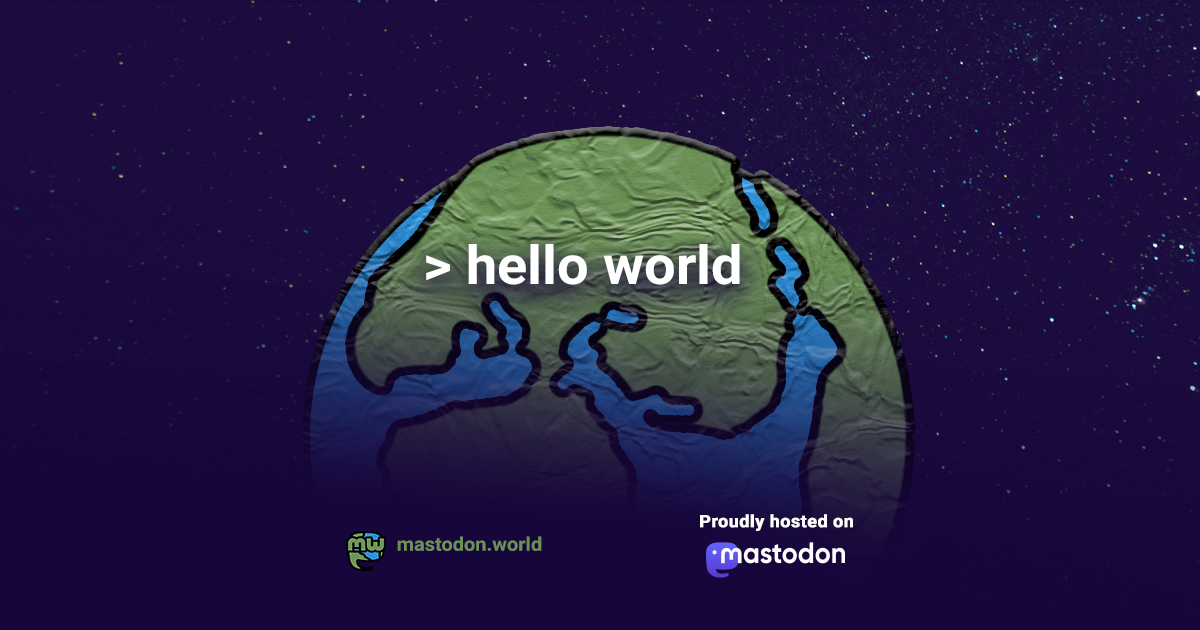Francis Villatoro<p> <a class="hashtag" href="https://bsky.app/search?q=%23NaturePhysics" rel="nofollow noopener noreferrer" target="_blank">#NaturePhysics</a> Simulating two-dimensional lattice gauge theories on a qudit quantum computer <a href="https://www.nature.com/articles/s41567-025-02797-w" rel="nofollow noopener noreferrer" target="_blank">https://www.nature.com/articles/s41567-025-02797-w</a></p>
Recent searches
No recent searches
Search options
Only available when logged in.
mastodon.world is one of the many independent Mastodon servers you can use to participate in the fediverse.

Generic Mastodon server for anyone to use.
Administered by:
Server stats:
8.8Kactive users
mastodon.world: About · Status · Profiles directory · Privacy policy
Mastodon: About · Get the app · Keyboard shortcuts · View source code · v4.3.8
#naturephysics
0 posts · 0 participants · 0 posts today
Francisco R. Villatoro<p><a href="https://mathstodon.xyz/tags/NaturePhysics" class="mention hashtag" rel="nofollow noopener noreferrer" target="_blank">#<span>NaturePhysics</span></a> Simulating two-dimensional lattice gauge theories on a qudit quantum computer <a href="https://www.nature.com/articles/s41567-025-02797-w" rel="nofollow noopener noreferrer" translate="no" target="_blank"><span class="invisible">https://www.</span><span class="ellipsis">nature.com/articles/s41567-025</span><span class="invisible">-02797-w</span></a></p>
Francisco R. Villatoro<p><a href="https://mathstodon.xyz/tags/PhysRevLett" class="mention hashtag" rel="nofollow noopener noreferrer" target="_blank">#<span>PhysRevLett</span></a> Quantum Simulation of SU(3) Lattice Yang-Mills Theory at Leading Order in Large-𝑁𝑐 Expansion <a href="https://journals.aps.org/prl/abstract/10.1103/PhysRevLett.133.111901" rel="nofollow noopener noreferrer" translate="no" target="_blank"><span class="invisible">https://</span><span class="ellipsis">journals.aps.org/prl/abstract/</span><span class="invisible">10.1103/PhysRevLett.133.111901</span></a> <a href="https://mathstodon.xyz/tags/NaturePhysics" class="mention hashtag" rel="nofollow noopener noreferrer" target="_blank">#<span>NaturePhysics</span></a> Simulating two-dimensional lattice gauge theories on a qudit quantum computer <a href="https://www.nature.com/articles/s41567-025-02797-w" rel="nofollow noopener noreferrer" translate="no" target="_blank"><span class="invisible">https://www.</span><span class="ellipsis">nature.com/articles/s41567-025</span><span class="invisible">-02797-w</span></a></p>
Francisco R. Villatoro<p><a href="https://mathstodon.xyz/tags/NaturePhysics" class="mention hashtag" rel="nofollow noopener noreferrer" target="_blank">#<span>NaturePhysics</span></a> Simulating two-dimensional lattice gauge theories on a qudit quantum computer <a href="https://www.nature.com/articles/s41567-025-02797-w" rel="nofollow noopener noreferrer" translate="no" target="_blank"><span class="invisible">https://www.</span><span class="ellipsis">nature.com/articles/s41567-025</span><span class="invisible">-02797-w</span></a> // <a href="https://arxiv.org/abs/2310.12110" rel="nofollow noopener noreferrer" translate="no" target="_blank"><span class="invisible">https://</span><span class="">arxiv.org/abs/2310.12110</span><span class="invisible"></span></a> by using a trapped-ion qudit quantum processor, where quantum information is encoded in d different states per ion, rather than in 2.</p>
Francis Villatoro<p><a class="hashtag" href="https://bsky.app/search?q=%23NaturePhysics" rel="nofollow noopener noreferrer" target="_blank">#NaturePhysics</a> Simulating two-dimensional lattice gauge theories on a qudit quantum computer <a href="https://www.nature.com/articles/s41567-025-02797-w" rel="nofollow noopener noreferrer" target="_blank">www.nature.com/articles/s41...</a> // <a href="https://arxiv.org/abs/2310.12110" rel="nofollow noopener noreferrer" target="_blank">arxiv.org/abs/2310.12110</a> by using a trapped-ion qudit quantum processor, where quantum information is encoded in d different states per ion, rather than in 2.</p>
Florian Marquardt<p>For friends of <a href="https://fediscience.org/tags/neuromorphicComputing" class="mention hashtag" rel="nofollow noopener noreferrer" target="_blank">#<span>neuromorphicComputing</span></a>, we are happy that our new idea, spearheaded by Clara Wanjura, is now published in <a href="https://fediscience.org/tags/NaturePhysics" class="mention hashtag" rel="nofollow noopener noreferrer" target="_blank">#<span>NaturePhysics</span></a>. It shows how to take a linear optical device and turn it into a fully nonlinear neuromorphic device which can be trained efficiently.</p><p><a href="https://www.nature.com/articles/s41567-024-02534-9" rel="nofollow noopener noreferrer" translate="no" target="_blank"><span class="invisible">https://www.</span><span class="ellipsis">nature.com/articles/s41567-024</span><span class="invisible">-02534-9</span></a></p><p>Neuromorphic computing is all about possible paths towards replacing energy-hungry digital artificial neural networks by more physics-based devices. <br>...</p><p>Picture credit: CC Wanjura</p><p>1/n</p>
Universität Stuttgart<p>Elektronen bewegen sich in Pikosekunden, also in nur einer Billionstelsekunde. Doch Forschende der <a href="https://xn--baw-joa.social/tags/UniStuttgart" class="mention hashtag" rel="nofollow noopener noreferrer" target="_blank">#<span>UniStuttgart</span></a> haben sie mit einer neuen Mikroskopiemethode trotzdem zu fassen bekommen. Das hilft, Materialien mit maßgeschneiderten Eigenschaften zu entwickeln, etwa für ultraschnelle Sensoren - ein Durchbruch in der <a href="https://xn--baw-joa.social/tags/Quantenmikroskopie" class="mention hashtag" rel="nofollow noopener noreferrer" target="_blank">#<span>Quantenmikroskopie</span></a>. <a href="https://sohub.io/lmso" rel="nofollow noopener noreferrer" translate="no" target="_blank"><span class="invisible">https://</span><span class="">sohub.io/lmso</span><span class="invisible"></span></a><br><a href="https://xn--baw-joa.social/tags/naturephysics" class="mention hashtag" rel="nofollow noopener noreferrer" target="_blank">#<span>naturephysics</span></a></p>
Francisco R. Villatoro<p><a href="https://mathstodon.xyz/tags/Blog" class="mention hashtag" rel="nofollow noopener noreferrer" target="_blank">#<span>Blog</span></a> <a href="https://mathstodon.xyz/tags/NaturePhysics" class="mention hashtag" rel="nofollow noopener noreferrer" target="_blank">#<span>NaturePhysics</span></a> Un bus cuántico bidireccional entre dos cúbits superconductores <a href="https://francis.naukas.com/2023/01/07/un-bus-cuantico-bidireccional-entre-dos-cubits-superconductores/" rel="nofollow noopener noreferrer" target="_blank"><span class="invisible">https://</span><span class="ellipsis">francis.naukas.com/2023/01/07/</span><span class="invisible">un-bus-cuantico-bidireccional-entre-dos-cubits-superconductores/</span></a></p>
ExploreLive feeds
Mastodon is the best way to keep up with what's happening.
Follow anyone across the fediverse and see it all in chronological order. No algorithms, ads, or clickbait in sight.
Create accountLoginDrag & drop to upload
